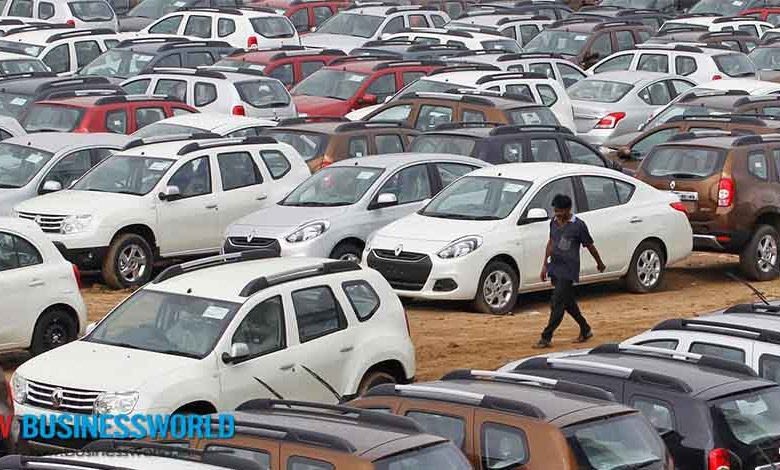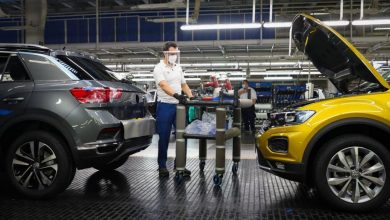
Impact And Implications Of COVID-19 On The Automotive Industry
A prolonged truncation of consumer demand due to the lockdown is seen significantly affecting auto manufacturers (OEMs) revenues and cash flows.
The COVID-19 pandemic has pushed humanity and the global economy into a crisis not seen since The Great Depression. In their effort to curb this pandemic, the Indian government, like many others, has enforced a national lockdown for 21 days. While the lockdown may have helped limit the spread of the virus, it has severely affected the economy, disrupting entire value-chains of most major industries in India. The automotive industry is no different.
The auto sector had already undergone considerable slowdown over the last 12-18 months due to structural changes beginning with the Goods and Services Tax, shift to Shared Mobility, Axle-load reforms, the Bharat Stage-IV (BS-IV) to Bharat Stage-VI (BS-VI) transition, Liquidity Crunch and so on. The COVID-19 lockdown has had a multiplier effect – the industry has almost been at a complete standstill since 24th March. A prolonged truncation of consumer demand due to the lockdown is seen significantly affecting auto manufacturers (OEMs) revenues and cash flows.
In response, most of the companies are starving research and development (R&D) funding to sustain core operations and potentially setting back the progress made on alternate fuel and mobility technologies by 2-4 quarters. Eventually, some companies may even choose to take a strategic call to exit unprofitable markets and vehicle segments.
Auto dealers have been unable to deliver vehicles during the lockdown, and have reported 30-45 days of finished goods inventory, likely to be heavily discounted post lockdown. Further, with BS-VI sales mandated from 10 days after lockdown ends (and sale of 10% of existing BS-IV inventory until then), dealers face significant burden to liquidate unsold BS-IV inventory, worth ~INR 6,300 Crore. OEMs will need to financially support dealer groups, further stressing their own balance sheets. Auto-suppliers have a high dependence on migrant labour, whose absenteeism is expected to further delay revival post lockdown, resulting in a domino effect on the entire value chain. Suppliers facing liquidity issues may succumb to deteriorating market conditions, causing widespread disruption across the entire manufacturing ecosystem.
Captive finance companies are also likely to face the brunt, as loan defaults are likely to shoot-up, and new loans are expected to drop, given difficulties in determining customers’ creditworthiness, further denting the firms’ profitability. Lastly, the lockdown is likely to put a strain on mobility solutions, used-car, and after-market service providers, whose funding depends on aggressive growth projections. Shared mobility players (ride-sharing, car-sharing, ride-hailing) may have to rethink their offerings in the short term, as customers grow averse to transport means that violate social distancing norms.
The Indian ecosystem may take inspiration from Chinese OEMs to fight the slowdown. A few of the players such as Volkswagen, SAIC, Nissan and BMW in China have turned to the online sale of cars, using VR and live broadcasts to stimulate sales. Another Chinese player, Geely introduced contactless delivery, where social distancing is maintained throughout the journey, including the keys being delivered using a drone! These initiatives have found traction, with Geely reporting 10,000 bookings for contactless delivery within a month of launch. SAIC, BYD, GAC along with parts suppliers have begun production of facemasks and disinfectants to support the healthcare system. The path to revival for ecosystem players is multi-phased. While they may Respond with some actions immediately, they would also need to prepare to Recover lost value through initiatives after lockdown ends. Additionally, they need to consider appropriately reacting to permanent disruptions caused by the pandemic and Reinvent their businesses with long-term interventions. Some of the key interventions which may be considered are listed below.
Respond (during the lockdown period)
- Engage with customers and the dealer network (virtual gamified training for sales staff; relevant DIY videos on social media for customers)
- Manage the liquidity crunch in the system (financial support to network with quicker incentives disbursal and temporary relief from interest burden)
- Actively contribute to fighting the pandemic (support contract workers in the automotive ecosystem; production of sanitizers, masks, PPEs in manufacturing plants)
- Plan well for the post-COVID-19 situation (efficient warranty and dealer claims disbursal; planning for short-term demand skew for spare parts)
Recover (1-2 quarters after lockdown ends)
- Plan initiatives to capitalise the potential aversion to shared mobility and public transport (‘push’ marketing for 2W, entry-level 4Ws and pre-owned cars, ‘in-market’ demo cars to boost test-drives)
- Prepare for the spike in after-sales (service-on-wheels and service camps for scheduled maintenance)
- Re-assess upcoming launches and financing offerings (financing schemes to tackle liquidity crunch)
- Assess and de-risk supply chain dependencies (indigenisation of major components; trigger-based contingency plans for the entire network)
- Prepare for an omnichannel sales experience (virtual sales consultants; online sales and digital documentation)
- Adopt hygiene-centric process and design changes (sanitization/fumigation of the vehicle as part of workshop services and test-drive; design no-contact customer journeys)
- Explore alternate revenue options (prioritize allied products and services – accessories, concierge services)
- Capture opportunity to consolidate operations (partnership/acquisitions to realise synergies; new sources of funding)
Reinvent (2+ quarters after lockdown ends)
- Plan for shifting mobility preferences of the consumer (review alliances to focus on trends like alternate asset ownership models)
- Adopt digitalisation of consumer touchpoints (end-to-end digitalisation of customer journey for both sales and service)
- Explore offerings around the hyper-local delivery model (product and customer strategy aligned to the growing demand for home delivery)
- Redesign processes to become lean and responsive (low fixed cost business models; analytics usage to better design short-term response strategies)
Fonte: Business World





